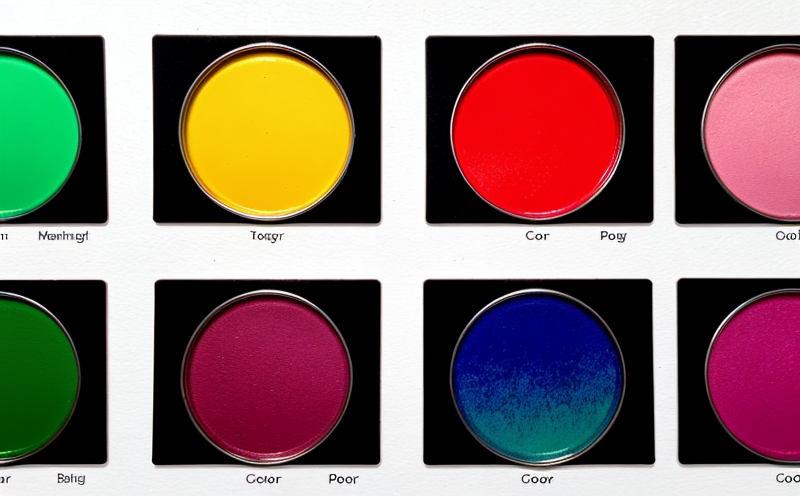CIE 189 Spectrum Testing of LED Packages and Modules
The CIE 189 standard is a comprehensive method for the spectral characterization of light-emitting diode (LED) packages and modules. This test ensures that LEDs meet stringent requirements, particularly in terms of their emitted light spectrum which can impact color rendering index (CRI), correlated color temperature (CCT), and overall performance within lighting systems.
The process involves the use of specialized spectroradiometers to measure the radiant intensity over a specified wavelength range. This data is then used to create an accurate spectral power distribution curve, allowing for detailed analysis of LED characteristics. Compliance with CIE 189 ensures that LEDs will perform consistently across various lighting applications and environments.
For R&D engineers and quality managers, this test provides critical insights into the color fidelity and efficiency of their products. It is an essential step in ensuring consistent performance and meeting market expectations for high-quality lighting solutions.
The testing procedure typically begins with precise sample preparation to ensure accurate measurement results. Samples are placed within the spectroradiometer's measurement chamber, where they undergo spectral analysis under defined conditions. The collected data is then processed using sophisticated algorithms to generate a detailed report that includes both raw measurements and derived values such as CRI and CCT.
The importance of this testing cannot be overstated in today’s competitive market for LED lighting products. Non-compliance can lead to poor product performance, customer dissatisfaction, and potential regulatory issues. Ensuring compliance through rigorous testing not only enhances the reputation of your brand but also opens doors to new markets where stringent standards are enforced.
Here are some key aspects that make CIE 189 spectrum testing indispensable for LED manufacturers:
- Accurate spectral power distribution measurement ensures consistent light output across different environments and applications.
- Supports the development of high-efficiency, energy-saving products that meet global standards.
- Promotes innovation by allowing developers to fine-tune their designs for optimal performance under various conditions.
The following table highlights some industry applications where CIE 189 spectrum testing is particularly relevant:
| Industry Application | Description |
|---|---|
| Architectural Lighting | Ensures consistent color and brightness in complex architectural designs. |
| Automotive Lighting | Guarantees accurate signal transmission for headlights, taillights, and other safety features. |
| Sports Lighting | Promotes improved visibility and performance during night-time events. |
| Medical Lighting | Ensures precise color rendering in environments where accuracy is critical. |
Why It Matters
The importance of CIE 189 spectrum testing cannot be understated. In today’s market, consumers expect high-quality lighting that not only performs well but also meets their aesthetic and functional requirements. Non-compliance can lead to product failures, customer dissatisfaction, and potential legal issues.
For quality managers and compliance officers, ensuring adherence to this standard is crucial for maintaining a positive brand reputation and staying competitive in the market. It demonstrates commitment to delivering products that meet or exceed industry standards.
From an engineering perspective, CIE 189 spectrum testing helps developers fine-tune their designs for optimal performance under various conditions. This ensures that the final product meets both technical specifications and real-world expectations.
The test also plays a vital role in regulatory compliance, particularly in regions with strict lighting regulations. By ensuring compliance early on in the development process, manufacturers can avoid costly recalls and fines later down the line.
Industry Applications
CIE 189 spectrum testing finds application across various sectors where accurate light measurement is crucial. Below are some specific areas that benefit from this type of testing:
- Architectural Lighting: Ensures consistent color and brightness in complex architectural designs.
- Automotive Lighting: Guarantees accurate signal transmission for headlights, taillights, and other safety features.
- Sports Lighting: Promotes improved visibility and performance during night-time events.
- Medical Lighting: Ensures precise color rendering in environments where accuracy is critical.
- Horticultural Lighting: Optimizes plant growth by providing the right spectrum of light for photosynthesis.
- Consumer Electronics: Enhances user experience through better lighting within devices like smartphones and tablets.
- Public Lighting: Ensures energy efficiency and environmental friendliness in large-scale installations.
This comprehensive testing ensures that LEDs meet the stringent requirements of these diverse applications, enhancing both performance and compliance.
International Acceptance and Recognition
CIE 189 spectrum testing is widely recognized across international standards bodies such as the International Organization for Standardization (ISO) and the American Society for Testing and Materials (ASTM). Its acceptance is particularly strong in regions where stringent lighting regulations are enforced.
- ISO: ISO 17697-3, which includes CIE 189 as a reference standard.
- ASTM: ASTM E2042 covers the application of CIE 189 for LED characterization.
Besides these global standards, many countries have adopted their own versions of this testing method. For instance:
- Europe: EN 62714-3 incorporates CIE 189 as a key component for LED characterization.
- United States: UL 8750, which includes CIE 189 in its requirements for LED lighting products.
- China: GB/T 24907 specifies the use of CIE 189 for evaluating LED performance.
The widespread acceptance and recognition of CIE 189 reflect its importance in ensuring consistent quality across diverse applications. Compliance with this standard not only enhances product performance but also opens doors to new markets where stringent standards are enforced.





